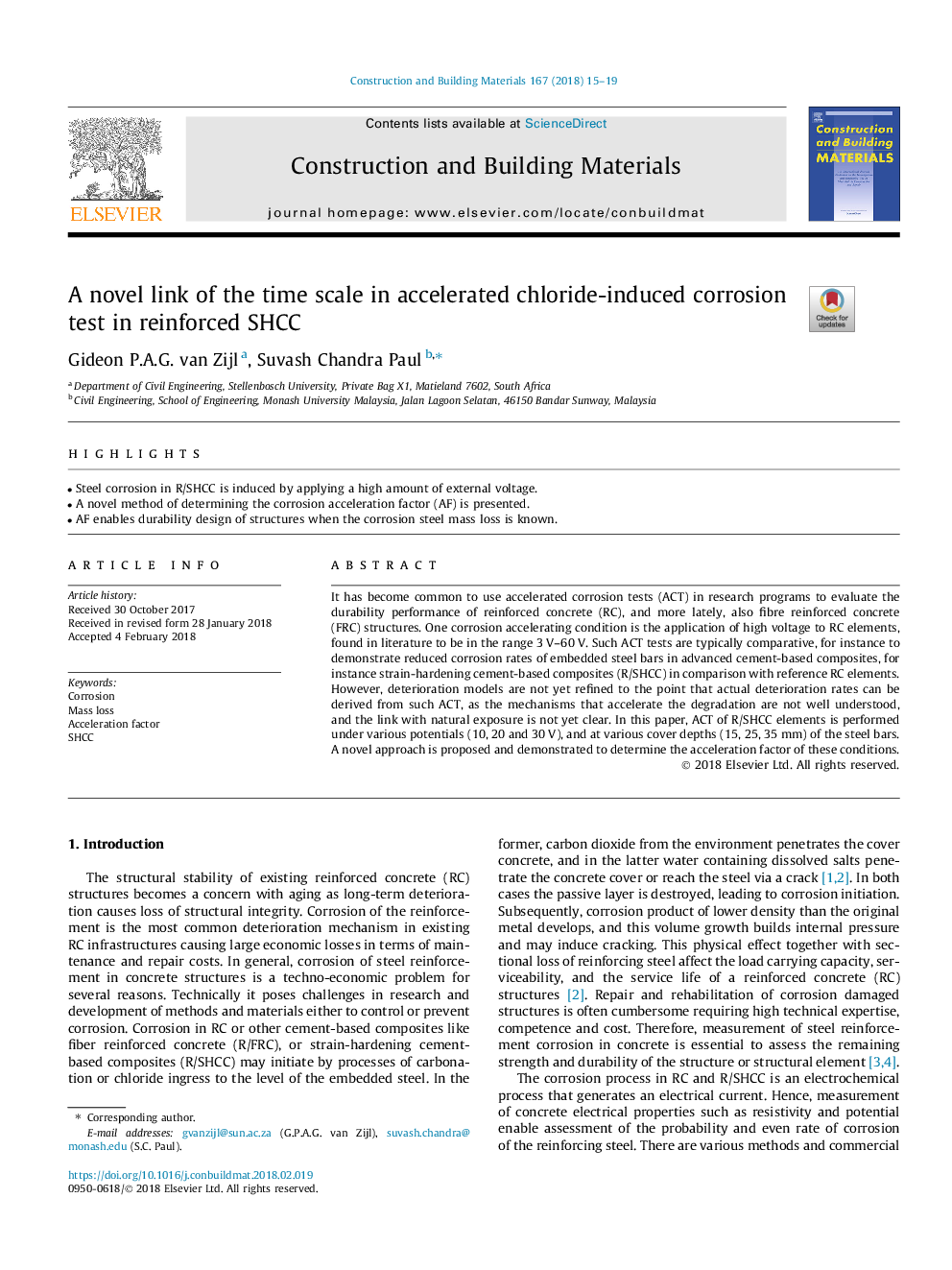| Article ID | Journal | Published Year | Pages | File Type |
|---|---|---|---|---|
| 6714843 | Construction and Building Materials | 2018 | 5 Pages |
Abstract
It has become common to use accelerated corrosion tests (ACT) in research programs to evaluate the durability performance of reinforced concrete (RC), and more lately, also fibre reinforced concrete (FRC) structures. One corrosion accelerating condition is the application of high voltage to RC elements, found in literature to be in the range 3â¯V-60â¯V. Such ACT tests are typically comparative, for instance to demonstrate reduced corrosion rates of embedded steel bars in advanced cement-based composites, for instance strain-hardening cement-based composites (R/SHCC) in comparison with reference RC elements. However, deterioration models are not yet refined to the point that actual deterioration rates can be derived from such ACT, as the mechanisms that accelerate the degradation are not well understood, and the link with natural exposure is not yet clear. In this paper, ACT of R/SHCC elements is performed under various potentials (10, 20 and 30â¯V), and at various cover depths (15, 25, 35â¯mm) of the steel bars. A novel approach is proposed and demonstrated to determine the acceleration factor of these conditions.
Related Topics
Physical Sciences and Engineering
Engineering
Civil and Structural Engineering
Authors
Gideon P.A.G. van Zijl, Suvash Chandra Paul,
